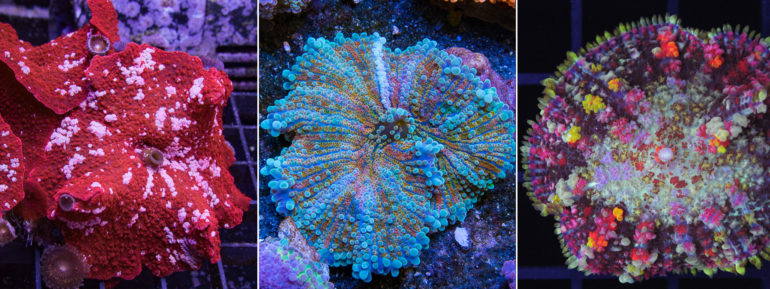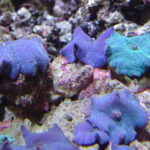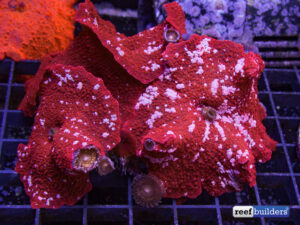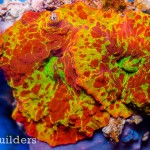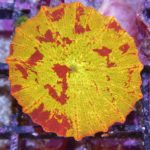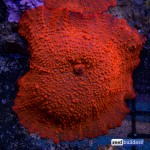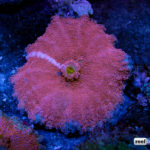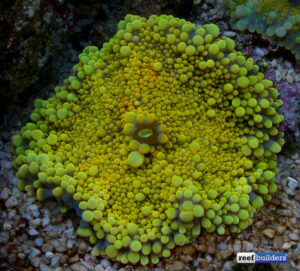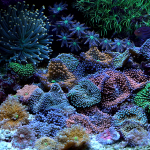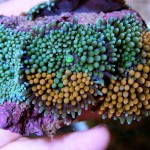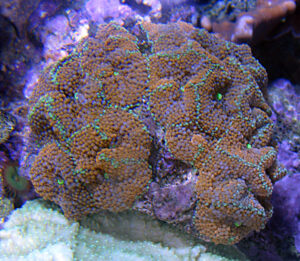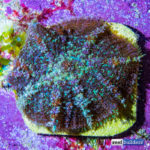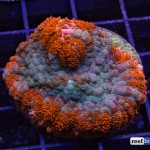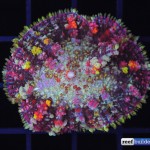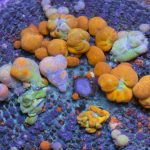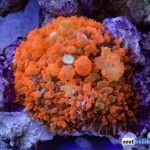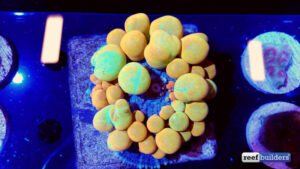Saltwater Shrooms
Mushrooms, shrooms, corallimorphs, whatever you call them, these brightly colored cnidarians are a hot commodity in the marine aquarium hobby. Shrooms are great for beginners because of their hardy care requirements, and popular amongst seasoned aquarist for their bright color patterns and overinflated vesicles.
There are three main varieties of shrooms, Discosoma, Ricordea, and Rhodactis.
Discosoma
Discosomas tend to be smooth with few vesicle or bumps covering the disk. The color possibilities are endless with discosoma and you can pick up a basic rock with a few polyps for under $40. High-end discosoma, however, can cost a pretty penny with strains like jawbreakers and eclectus discosoma selling for thousands of dollars.
Once established discosoma can spread and multiply quickly. Discosoma are photosynthetic and like medium to high light, and they will also eat aquarium foods.
Ricordea
Ricordea shrooms are covered in round vesicles giving them a distinct appearance. There are two types of Ricordea corals, one from the Pacific which is Ricordea yuma and one from the Caribbean Ricordea florida.
The Pacific variety is often must larger and showier than it’s Caribbean counterpart and can grow up to 5-7 inches in diameter. Ricordea florida can be around 1 inch in diameter and don’t grow much bigger.
The three pictures in the top row are Ricordea yuma with Ricordea florida below. Ricordea florida corals are relatively inexpensive and you should be able to pick up a basic mushroom between $20-30. But as with all coral, the crazier the colors and the more they glow under blue lights, they are worth whatever someone is willing to pay.
Rhodactis
Rhodactis have more vesicles with a pseudo tentacle covering the disk making it appear fuzzy. While simple rhodactis mushrooms are inexpensive, holy grail rhodactis that form large bouncy bubbles are some of the most expensive corals in the hobby.
Shrooms are photosynthetic corals that like medium to high light with minimal flow. These corals are sold on a piece of rock or a ceramic frag plug, and if they don’t like their resting place in your tank, they may detach from their base in search of more suitable condition.
If you have a loose shroom you want to place it in a small cup with some rocks or frag plugs and try have it reattached. The last thing you want if a shroom to go through your powerhead!


